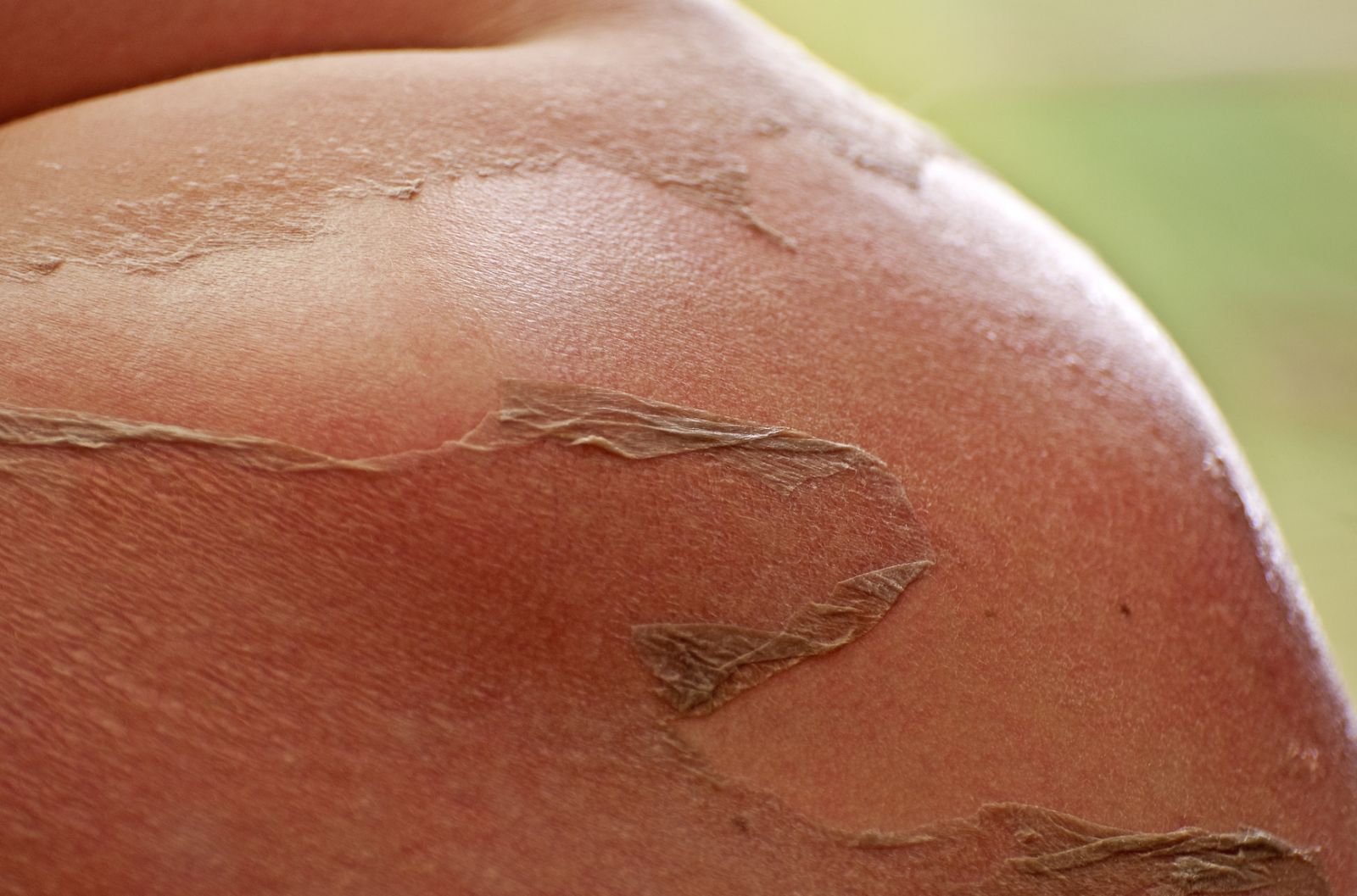Welcome to the DermacenterMD Blog
Posts for tag: melanoma
 Check out this article from the Skin Cancer Foundation. It's important to remember that people of all skin types and tones can be affected by skin cancer.
Check out this article from the Skin Cancer Foundation. It's important to remember that people of all skin types and tones can be affected by skin cancer.
People who have dark skin tones often believe they're not at risk for skin cancer, but that is a dangerous misconception , says dermatologist Maritza I. Perez, MD, a senior vice president of The Skin Cancer Foundation.
"Anyone can get skin cancer, regardless of race," she says. While incidence of melanoma is higher in the Caucasian population, a July 2016 study in the Journal of the American Academy of Dermatology showed it is more deadly in people of color. African American patients were most likely to be diagnosed with melanoma in its later stages than any other group in the stuy, and they also had the worst prognosis and the lowerst overall survival rate. Most skin cancers are associated with ultraviolet (UV) radiation from the sun or from tanning beds, says Dr. Perez. Yes, darker skin produces more of the pigment called melanin that does help protect skin- but onlyto a certain extent. People of color can still get sunburned, and they can also develop skin cancer from UV damage.
It’s of concern that 65 percent of African American participants in a survey said they never used sunscreen. This needs to change, says Dr. Perez. “Remember, ethnicity does not define skin type. It can represent a wide range of skin tones with a wide range of risks.” To avoid premature aging and damage that can lead to skin cancer, everyone should use sunscreen every day and practice sun-safe habits, such as seeking shade and wearing protective clothing, hats and UV-blocking sunglasses.
Additionally, certain skin cancers are caused by factors other than UV — such as genetics or environmental influences — and may occur on parts of the body rarely exposed to the sun. For example, people who have dark skin are more susceptible to acral lentiginous melanoma (ALM), an especially dangerous form of melanoma that typically appears on the palms of the hands and soles of the feet. (The Jamaican singer and musician Bob Marley died of ALM when he was only 36.)


People who have dark skin are more susceptible to acral lentiginous melanoma (ALM), like these examples above.
It’s crucial to detect skin cancer early, when it is easiest to treat and most likely to be cured. Dr. Perez says she advises people of all ethnicities to do a monthly skin self-exam and see a dermatologist annually — and sooner if any of the warning signs appear:
- A bump, patch, sore or growth that bleeds, oozes, crusts, doesn’t heal or lasts longer than a month. This may indicate basal cell carcinoma.
- An ulcer, scaly red patch, wart-like growth or sore that sometimes crusts or bleeds could be a sign of squamous cell carcinoma. This type of skin cancer can also develop in old scars or areas of previous physical trauma or inflammation.
- New or existing moles that are asymmetrical, have an irregular border, more than one color, are larger than a pencil eraser or change in any way may indicate melanoma. Pay special attention to suspicious spots on the hands, soles of the feet or under the nails, which could signify ALM.
What could excessive sun exposure potentially do to my skin?

- Increase signs of aging
- Wrinkles
- Leathery appearance
- Pigment Changes
- Age Spots
- Loss of Elasticity
- Broken blood vessels
- Freckles
- Greatly increase your chances of getting skin cancer
- Basal Cell Carcinoma- the most common form of skin cancer found in the outer most layer of the skin
- Squamous Cell Carcinoma- the second most common form of skin cancer that can cause disfigurement
- Melanoma- the most serious form of skin cancer that is potentially fatal
Yes, you read that right. Exposing your skin to the sun without protection can cause you to look older, damage your skin and even potentially cause death. Skin cancer is a serious problem that most people overlook. Protecting your skin from the sun by taking the proper precautions, such as wearing sunscreen, can make you happier and healthier. Wearing your sunscreen can save your life!
.jpg) This month is a special month dedicated to remind us just how important it is that we protect our skin from the sun. The aim of this month is to raise awareness of the most deadly form of skin cancer. The entire month of May is National Skin Cancer Awareness Month and it is important to understand that everyone, despite age, race or skin type is at risk for skin cancer. In fact, 1 in 5 Americans will have skin cancer at some point in their life. Skin cancer is common and it could happen to you. However, there are ways to prevent skin cancer and reduce your risk. Here are 5 different ways you can protect your skin from developing skin cancer:
This month is a special month dedicated to remind us just how important it is that we protect our skin from the sun. The aim of this month is to raise awareness of the most deadly form of skin cancer. The entire month of May is National Skin Cancer Awareness Month and it is important to understand that everyone, despite age, race or skin type is at risk for skin cancer. In fact, 1 in 5 Americans will have skin cancer at some point in their life. Skin cancer is common and it could happen to you. However, there are ways to prevent skin cancer and reduce your risk. Here are 5 different ways you can protect your skin from developing skin cancer:
1. Wear Sunscreen-
This is perhaps the most important of all the ways to prevent skin cancer. You should be wearing sunscreen 365 days a year! The sun beats down on us each and every day, even if we don't see it. You should be sure to apply sunscreen whenever you go out. When selecting your daily sunscreen, be sure to get an SPF of at least 30 and make sure it contains at least one of these ingredients: titanium dioxide, zinc oxide or parsol 1789 (avobenzone). Also, it is important to apply enough sunscreen when you go out. If you are going out for an extended period of time, you should be applying 2 tablespoons of sunscreen every 2 hours.
2. Avoid Sun-
If you forget your sunscreen, you will want to avoid the sun as much as possible. Wearing a hat and long sleeves and long pants will also help to reduce your sun exposure. It is important to know that the sun is hottest between the hours of 10 a.m. and 4 p.m., so you should seek shade whenever possible, especially between those hours.
3. Check your skin monthly-
Skin cancer is treated most easily when it is caught early. If you set aside time every month to check your skin, you will know if something suspicious shows up. Checking your skin monthly allows you to catching anything unusual early and then get in to see your dermatologist as soon as possible. When checking your own skin, don't forget to look in hard to see places like your scalp, back, bottoms of your feet and between your toes. You may ask someone who cares about you to help you in this process to ensure that every inch is checked.
4. Know what to look for-
When you check your skin it is important that you know the signs of skin cancer. The most important thing to remember is that if you have a new or changing mole or lesion, you should have it checked. If something is new and changes or if something just won’t go away, then you should go in to have it checked. The following diagram contains the ABCDE's of melanoma:
A- Asymmetrical Shape: Melanoma lesions are often irregular, or not symmetrical, in shape. Benign moles are usually symmetrical.
B- Border Irregularity: Typically, non-cancerous moles have smooth, even borders. Melanoma lesions usually have irregular borders that are difficult to define.
C- Color: The presence of more than one color (blue, black, brown, tan, etc.) or the uneven distribution of color can sometimes be a warning sign of melanoma. Benign moles are usually a single shade of brown or tan.
D- Diameter: Melanoma lesions are often greater than 6 millimeters in diameter (approximately the size of a pencil eraser).
E- Evolution: The evolution of your mole(s) has become the most important factor to consider when it comes to diagnosing a melanoma. Knowing what is normal for YOU could save your life. If a mole has gone through recent changes in color and/or size, bring it to the attention of a dermatologist immediately.
5. Annual Full-Body Skin Exam-
Last but certainly not least, it is essential to have your skin checked by a skin professional at least once a year. Your dermatologist knows what to look for. In fact, Dr. Moore is a skin cancer expert. He will look you over head to toe to ensure that nothing is suspicious. If he does find something suspicious, he will most likely perform a procedure known as a biopsy to test the site to make sure it does not contain skin cancer. If he does find skin cancer, you can rest easy knowing you are in good hands. Here at DermacenterMD, we offer to most comprehensive and state of the art treatments for skin cancer.
If you or someone you know is concerned about skin cancer, do not hesitate to call our office and set up your skin cancer screening exam. It could save your life, or the life of someone you love!
 Have you heard about the uproar tanning salons have been under? It turns out there is growing concern that tanning beds lead to increased risk of skin cancer. The debate has gotten so intense some of the states and cities are imposing harsh regulations and fines on tanning businesses. In fact, the city of Chicago banned tanning for anyone under the age of 18 while Indiana passed a law making it illegal for anyone under the age of 16 to tan.
Have you heard about the uproar tanning salons have been under? It turns out there is growing concern that tanning beds lead to increased risk of skin cancer. The debate has gotten so intense some of the states and cities are imposing harsh regulations and fines on tanning businesses. In fact, the city of Chicago banned tanning for anyone under the age of 18 while Indiana passed a law making it illegal for anyone under the age of 16 to tan.
If this seems a bit harsh, we should consider the story of one of our patients who was having her first baby when a nurse we had seen recommended she see us for a suspicious mole. It turned out that the young lady of age 28 had been a frequent user of tanning salons. She had the suspicious mole on her lower back.
It turned out to be a melanoma, a potentially life threatening form of skin cancer. Fortunately for her, she had someone tell her to come in. She could not see the mole on her back and it was wonderful that the nurse at the hospital knew enough to send her our way. She is alive and doing well today because her melanoma was caught early.
She is one of several we have met who were frequent ‘tanners’ who ended up having melanoma. It has become my firm belief that tanning is not worth the risk. I also feel strongly that we should have a full skin exam every year since catching a melanoma early can truly be life saving. Get in for your exam today. Let’s keep you safe and strong for your bright future.
-Roger Moore, MD
 From The Skin Cancer Foundation
From The Skin Cancer Foundation
Source: www.skincancer.org
A new study appearing in the journal Nature greatly reinforces the findings of an earlier landmark genetic study linking damage from the sun’s ultraviolet rays (UVR) to melanoma, the deadliest form of skin cancer. In 2009, researchers out of Hinxton, England, used new molecular technology to examine the complete genetic material (the genome) of a melanoma taken from a patient with the disease, identifying thousands of mutations (genetic flaws) caused by damage from solar UVR. The study has been seen as the greatest evidence to date that UVR causes genetic damage that may lead to melanoma.
Now, researchers at Harvard and MIT have studied the genomes of 25 melanoma patients. They discovered a specific gene, PREX2, that was damaged and mutated in 11 of the 25 genomes. They observed, furthermore, that the amount of mutations in this gene was directly linked to chronic UV exposure; the more exposure patients had, the more mutations they had in PREX2, apparently confirming the role of sun damage in melanoma development. PREX2 mutations have occasionally been reported in colon, lung, and pancreatic cancer, and frequently reported in breast cancers; they have been found to accelerate tumor formation in human melanocytes (the pigment cells where melanomas develop).
PREX2 normally interacts with a certain tumor-suppressing protein; UV damage may cause changes in PREX2 that allow the protein to turn from a tumor suppressor into a tumor promoter, thereby leading to melanoma.
“We still can’t say we know exactly how it works,” says Levi A. Garraway, senior coauthor of the study. “But PREX2 may be a very new category of mutated cancer genes that point us to at least one and maybe more pathways worth targeting therapeutically in melanoma.”
Professor Mark Middleton, director of Cancer research UK’s Experimental Cancer Medicine Center at the University of Oxford, said that the study highlighted the important role played by sun damage in melanoma, and emphasized the need to follow simple sun safety measures such as shade, clothing, and SPF15+ sunscreen.
Archive:
Tags
- dry skin (2)
- moisturizer (1)
- sensitive skin (3)
- PA (2)
- Skincare (2)
- skin cancer (29)
- cancer (6)
- facts (1)
- skin (19)
- dermatology (22)
- skin care (19)
- cosmetic (2)
- wrinkles (1)
- Botox (4)
- Dysport (3)
- sleep (1)
- look good (1)
- daily routine (1)
- healthy lifestyle (1)
- doctor (2)
- patient (1)
- sun protection (5)
- sunscreen (14)
- aging dermatology (1)
- providers (1)
- tanning (2)
- sun (6)
- UVA rays (2)
- UVB rays (2)
- melanoma (10)
- Acne (2)
- Treatment (2)
- sunscren (1)
- sun exposure (5)
- Melanoma Monday (2)
- Skin Cancer Awareness Month (1)
- education (2)
- skin cancer specialist (1)
- basal cell carcinoma (1)
- squamous cell carcinoma (1)
- ingredients (2)
- improve your smile (1)
- cosmetics (1)
- laser (1)
- fillers (2)
- sunburn (3)
- avoid the sun (1)
- hat (1)
- sun clothing (1)
- SPF (1)
- Rosacea (3)
- NP (1)
- Nurse Practitioner (1)
- mid-level provider (1)
- physician (1)
- dermatologist (6)
- cosmetic dermatology (4)
- anti-aging (2)
- youthful looks (1)
- Eczema (2)
- rash (2)
- itch (1)
- the rash that itches (1)
- reduce itch (1)
- itching (1)
- getting along with others (1)
- basal cell (2)
- squamous cell (2)
- detection (1)
- Mohs surgery (2)
- photoaging (1)
- Inspiring (1)
- word of the day (1)
- inspiration (3)
- uplifting (1)
- protection (4)
- lips (1)
- reduce wrinkles (1)
- look younger (1)
- encouragement (1)
- never give up (1)
- you can do it (1)
- medical school (1)
- dreams (1)
- brown spots (1)
- moles (2)
- liver spots (1)
- age spots (1)
- Abe Lincoln (1)
- life lessons (1)
- lip cancer (1)
- health (12)
- motivation (1)
- work (1)
- people (2)
- home life (1)
- lifestyle (1)
- ABCDEs of Melanoma (1)
- mole (1)
- skin check (2)
- skin facts (2)
- odd (1)
- fun (1)
- interesting (1)
- lung cancer (1)
- disease (1)
- Christmas (2)
- gifts (1)
- sun burn (1)
- winter skin tips (1)
- itchy skin (1)
- winter skin (1)
- myths (1)
- myth busted (1)
- skin protection (1)
- sunscreen safety (1)
- specialist (1)
- red skin (1)
- irritation (1)
- feel good (1)
- helping (1)
- help (1)
- helping others (1)
- treatment options (1)
- skin health (9)
- Vitamin D (2)
- tanning beds (1)
- skin health. dermatology (1)
- sunshine (1)
- awareness (1)
- prevention (1)
- sun damage (3)
- connections (1)
- working together (1)
- health care (1)
- biotin (1)
- medical (1)
- aging (1)
- elkhart (1)
- Roger Moore (1)
- check (1)
- skin type (1)
- skin cancer prevention (1)
- gift guide (1)
- Christmas gift guide (1)
- Dr. Roger Moore (1)
- holidays (1)
- family history (1)
